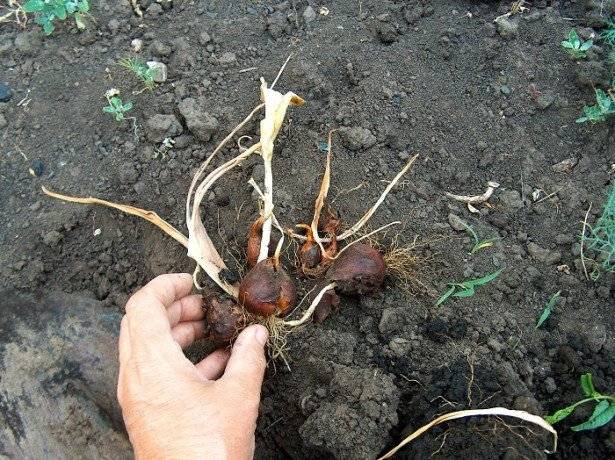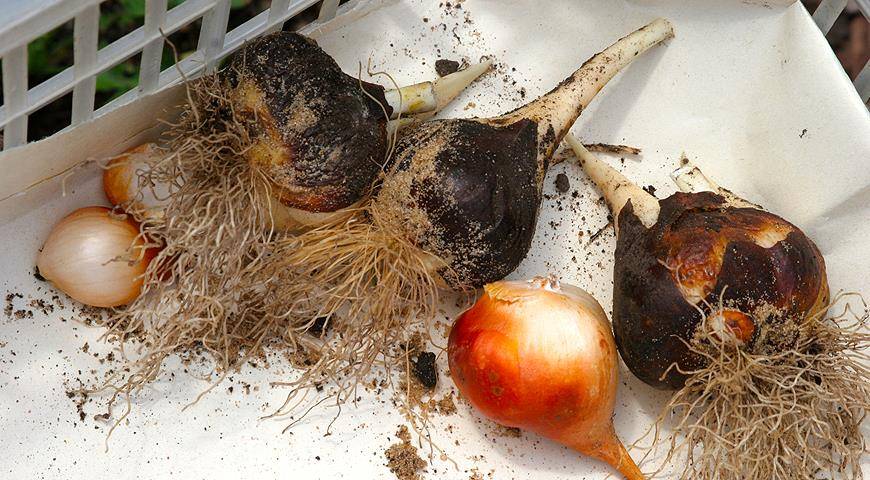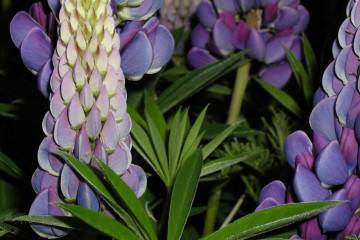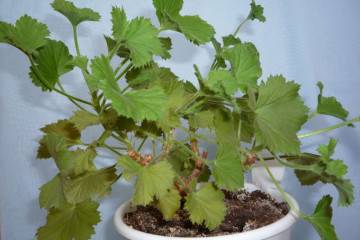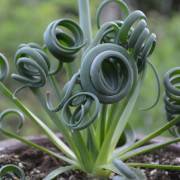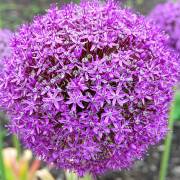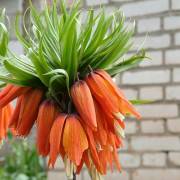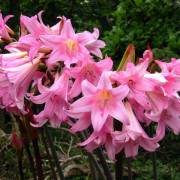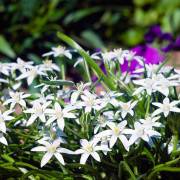When to dig up tulip bulbs after flowering
Content:
Tulips for many have long become a symbol of the coming spring. Their varietal variety simply amazes the imagination with various colors and shapes. That's just in order to annually admire these bright and blooming flowers, one of the first in the flower bed, you need to properly care for them. And, perhaps, one of the main points in care is the timely digging and storage of tulip bulbs.
When to dig up tulip bulbs after flowering
Many experienced flower growers agree that without proper and timely care of the bulbs, you should not expect lush flowering, as well as large and bright flowers. Flowers are dug up in the middle or at the end of summer, depending on the variety and flowering period. But, as in every business, there are nuances here, without knowing which, you can very easily harm the plant, especially the Dutch varieties.
Tulips have faded: what's next
Inexperienced flower lovers are often afraid to miss this crucial moment and ask themselves the question: tulips have faded - what's next?
Despite the often raised question about the advisability of this procedure, the bulk of gardeners recommend cutting the stem of the plant - this will give the bulb the strength to ripen faster. You need to cut off the shoot, stepping back from the ground at a distance equal to about two leaves.
After that, tulips should be watered with warm, settled water, but do not forget that although plants love moisture, an excess of it and stagnation in the root system can cause fungal diseases.
When to dig up tulip bulbs
When to dig up tulip bulbs after flowering, it is difficult to say unequivocally: it depends on their variety and the climatic conditions of the area. One thing can be said with certainty: do not allow the plant stems to completely dry out, otherwise there is a risk of losing a lot of time in search of them, and, as a result, damage a lot of seed with a shovel.
There is no need to rush to dig up green plants - this will affect their ability to bloom.
When to dig up tulips after flowering and how to store the resulting seed of the next year in order to survive the winter with the least problems, even seasoned growers are worried. And, indeed, the dug out bulbs must be properly processed and stored under certain conditions, otherwise there is a risk of losing them during wintering.
If we are talking about early varieties of flowers, then they will be ready for digging by the middle - by the end of June. If we are talking about the climatic conditions of the middle zone (for example, in the Moscow region), then this will be the end of June - the beginning of July. Brownish scales are formed around the stem of the plant, directly on the bulb.
7-10 days before the expected digging, the plants stop watering - the earth and bulbs must be dry. Therefore, the day when it will be better to dig up the tulip bulbs, you need to pick up a dry, sunny day.
What to do with tulip bulbs after flowering
The plants should be dug out carefully so as not to damage the bulbs or babies. Further, caring for the dug out bulbs consists of the following steps:
- Drying.
- Sorting of material according to its size, destruction of sick and infected specimens.
- Drying of the material selected for planting. The selected bulbs are laid out in boxes made of boards (with holes for air circulation). If the weather permits - the days are warm and sunny - the boxes can be taken outside.
- Preparing tulips for planting.
- Selecting a suitable site and planting bulbs.
If the planting of the bulbs is not planned in the fall, then they should be prepared for wintering. To increase resistance to various diseases, many flower growers process the bulbs, which are first cleaned of dirt and excess husk, with a saline solution (1 tablespoon of salt is taken for 1 liter of water).
The dried material is laid in layers in boxes and stored in a dry, well-ventilated room, periodically checking it for possible appearance of sick and rotten specimens.
Can tulips be pruned after flowering
If the plans include getting strong bulbs capable of lush flowering next spring, then you should not give the opportunity to tie seeds to tulips - this will take a lot of energy from the plants. That is why it is better to cut off the head of a flower that begins to fade (fully opened) for 4-5 days.
It is very important to leave the leaves and the maximum length of the peduncle - so, due to the ongoing outflow of nutrients from the upper part of the plant to the bulb, there is an accumulation of strength for future luxurious flowering.
Another important factor for the formation of the bulb - during the flowering of terry varieties, it is advisable to tie them to a support, since the load on the stem is very large.
Is it obligatory to dig up tulips every year
If we are talking about the ability of tulips to winter in the open field, then just for the sake of this, you should not dig them out - they will winter well and so on. But if these are parrot, green-colored or fringed varieties, then the digging procedure should be carried out annually.
Otherwise, the flowers next spring will be small, or they may even disappear altogether, moreover, the likelihood is too high that all the specific characteristics of a particular variety will not be preserved. All other varieties can be dug up every 3-5 years.
How tulips breed
Tulips are cross-pollinated plants that are insect-pollinated in wildlife. Most often, tulips are propagated using bulbs: babies are formed around the parent bulb. Therefore, not everyone knows that this spring flower can also be propagated with the help of seeds - this is how wild tulips reproduce in the steppe.
Propagation using seeds
It is impractical to grow tulips using seeds in ordinary home conditions simply for the purpose of propagating them, since the flowers obtained in this way do not retain the parental characteristics. It's another matter if the goal is to get a new variety.
How to grow tulips from seeds at home can be figured out without any problems. The procedure is as follows:
- Pre-selected plant varieties are artificially pollinated. If the flowering period of the selected varieties does not coincide, then the collected pollen should be stored in the refrigerator until the desired moment. It is best to do this in a paper bag.
- In the mother plant, the anthers are removed a couple of days before the expected pollination.
- Pollination of the pistil is carefully carried out - a couple of times with an interval of 2-3 days.
- The pollinated plant is covered with paper, otherwise the flowers can be pollinated by insects.
The ripening of the seeds should be carefully monitored and the capsule should not be allowed to fully open - so all the seeds will crumble. As soon as the capsule turns brownish and begins to crack a little, the seeds are immediately harvested.
With the onset of autumn, seeds can be safely sown in open ground. Some flower lovers are reinsured and sowing in pots.
During the winter months, crops are stored at low temperatures, but they are not allowed to freeze. With the onset of spring, the planted plants are watered, weeded and protected from weeds.
For two years, young plants can not change the place, and then every year the children are transplanted to new places. As soon as the desired result in terms of varietal characteristics of the plants is achieved, propagation is carried out in the usual vegetative way.
Bulb propagation
How tulips reproduce by bulbs, even an inexperienced gardener knows. Like many bulbs (such as daffodils), tulips form baby bulbs around the old bulb. The bulbs dug out at the end of flowering are sorted out, dried and stored in a cool room.
Storage of babies must be done in a more humid room than adult bulbs, as they tend to dry out faster.
It will be possible to plant bulbs in open soil or in a greenhouse either in late autumn or early spring.
One of the main points in growing tulips, affecting their ability to bloom next year, is the need to dig up and properly preserve the bulbs of the plant in time. This is what affects the ability of some breeding varieties to retain all the characteristic features of the parent plant.
How to propagate tulips, each grower determines for himself. If we are talking about normal reproduction, then most often this is reproduction by bulbs. But if the goal is a selection experiment with the aim of developing a new variety, then they resort to seed reproduction.
To breed and grow tulips, you do not need to have any specific skills, you just need to follow certain rules in the care and the result will pay off all your efforts with interest. After all, the colorful bloom of these bright spring flowers can decorate any site or summer cottage.
